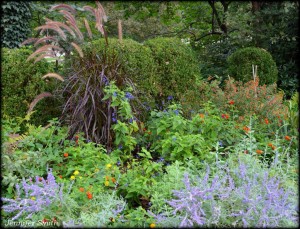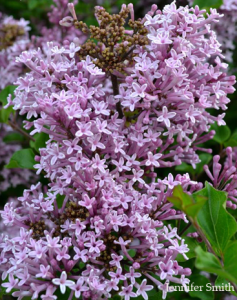The Sensory Garden
Fair warning: If you were to do a quick Internet search on sensory gardens, you may be a bit overwhelmed. Sensory gardens are often designed to stimulate the senses of young children; to highlight a particular sense, such as smell for the visually impaired; or to create places of calm and safety. Yet we all are creating sensory gardens each time we select a plant for our personal gardens. For instance, when you stroke the soft fuzz of the lamb’s ear, or Stachys byzantina, leaf and add it to your cart, you are responding the sense of touch.
When creating a sensory garden, designers pay particular attention to plants and hardscape material with a goal of triggering the senses of the visitors. The intended audience dictates the plant and material selection. At my secret garden that I am working to restore, there is a raised herb bed. Residents from the assisted living facility next door are often wheelchair bound and many have very limited mobility. The concept of the raised herb garden is to bring the herbs closer to their hands and faces so they can touch and smell the highly scented herbs.
For those creating gardens in public spaces, even if the location is not specifically for those with physical limitations, it is wise to examine the gardens as they will be experienced by all potential visitors. For example, tradition has us placing short plants at the front of the border. Those in wheelchairs or those with limited mobility may not be able to touch or easily see these low plants. Consider placing taller plants, even those 3 feet in height, in the front to accommodate those garden visitors.
Texture: Consider adding plants with wonderful texture from soft and fuzzy to coarse and crinkly. Ensuring all plants are safe to touch, those with visual limitations can experience the garden with their hands—feeling what we see—such as the deeply lobed Rodgersia, the waxy smooth Kalmia latifolia or the soft lamb’s ear.

